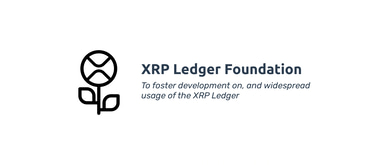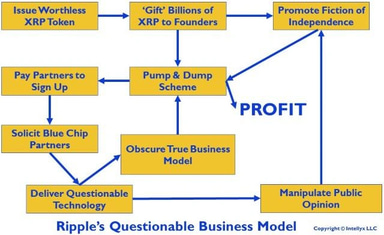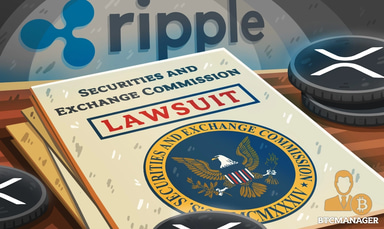Read
Edit
History
Notify
Share
XRP
XRP is the cryptocurrency of the Ledger XRP blockchain which was developed by Ripple Labs. XRP is used to instantly make and receive payments from anywhere in the world. XRP is accepted on some e-commerce sites. XRP is also used in Ripple products to facilitate quick conversion between different currencies. XRP Ledger is a platform created to help banks and companies carry out fast and cheap transactions.
Overview
XRP is the native cryptocurrency on the Ripple network, and it consistently ranks among the top 10 cryptocurrencies by market capitalization. XRP is a cryptocurrency that runs on the XRP Ledger, a blockchain engineered by Jed McCaleb, Arthur Britto and David Schwartz. McCaleb and Britto would go on to found Ripple and use XRP to facilitate transactions on the network. Ripple Labs was rebranded to Ripple in October 2015. Since then, the interchangeability in the terminology used to describe the company, the network, the XRP Ledger, and XRP itself has caused confusion to those new and old in the cryptocurrency space.[3][4][5]
History
2011
Jed McCaleb started developing a digital currency system (XRP Ledger) together with David Schwartz and Arthur Britto. They sought to create a more sustainable system for sending value. [6]
2012
XRP Ledger launched its native currency, XRP. By June, Schwartz, McCaleb and Britto finished code development, and the Ledger was complete. Once the XRP Ledger was live, 80% of the XRP was gifted to a new company that was set out to build use cases for the digital asset - initially called NewCoin and renamed quickly to OpenCoin.
2013
XRP was created in January 2013 by OpenCoin Inc.
2016
Ripple Labs and Jed Mccaleb reached an agreement to prevent the dumping of McCaleb's XRP and subject his resales to multiple restrictions.
2017
In May 2017, Ripple committed to replacing 55 billion XRP in a secured escrow account to create certainty of XRP supply at any given time which was completed in December 2017. [13]
Ripple stated:
“This move underscores Ripple’s commitment to building XRP liquidity and a healthy and trusted market. Long term, the value of digital assets will be determined by their utility. XRP has emerged as the only digital asset with a clear institutional use case designed to solve a multi-trillion dollar problem – the global payment and liquidity challenge that banks, payment providers, and corporates face.”
2020
XRP Ledger (XRPL) Foundation was established in September 2020 and raised $5.5 million from Ripple, Coil, and GateHub. XRPL Foundation is an independent and nonprofit entity with a mission to accelerate the development and adoption of the decentralized XRP Ledger. [12] Bharath Chari, foundation consultant of XRP Ledger said:
“The Foundation is extremely happy to work with stakeholders in the ecosystem for further innovation and use of XRP Ledger. We are committed to providing full support to growing the developer ecosystem."
2021
In Q4 2021, three billion XRP were released out of escrow (one billion each month) in line with prior quarters and the official escrow arrangement. In total, 2.4 billion XRP was returned and subsequently put into new escrow contracts throughout the quarter.
2022
In November 2022, Ripple released a "regulatory white paper" offering recommendations to British lawmakers and regulators on how to regulate the crypto industry. The paper emphasizes the UK's potential to develop its crypto asset sector and suggests three main recommendations: an inclusive regulatory framework, increased regulatory resources and coordination, and public education about the sector. Ripple compares the UK's efforts to those of other jurisdictions and calls for well-resourced regulatory authorities. The company also highlights the need to improve digital asset education and address negative portrayals of the industry. [20]
2023
On July 13, 2023, United States District Court Judge Analisa Torres ruled in favor of the company in a case brought forth by the Securities and Exchange Commission dating back to 2020. According to documents filed on July 13, Judge Torres has granted summary judgment in favor of Ripple Labs stating that XRP token is not a security. [18]
Larsen had a comment on X about the SEC withdrawing from the case:[25]
"The last 3 years we’ve seen a rogue administrative state that needs to be held accountable for its actions – not just an investigation into the conflicts of interests that led to these baseless claims, but how the US actively demolished its global standing as the home for innovation, with thousands of jobs moving overseas."
Legal Issues
Ripple Labs Inc. Resolves Criminal Investigation
May 2015 - Ripple Labs Inc. and its wholly-owned subsidiary, XRP II LLC, formerly XRP Fund II LLC, agreed to resolve a criminal investigation in exchange for a settlement agreement calling for a series of substantial remedial measures, including migration of a portion of Ripple’s virtual currency business to a separate entity, the company’s ongoing cooperation in other investigations, an extensive remedial framework to ensure future compliance with federal laws and forfeiture and penalties totaling $700,000, announced U.S. Attorney Melinda Haag of the Northern District of California, Director Jennifer Shasky Calvery of the U.S. Treasury Department Financial Crimes Enforcement Network (FinCEN) and Chief Richard Weber of the Internal Revenue Service (IRS) Criminal Investigation Division. [16]
SEC Charges Ripple and Two Executives
December 2020 - The Securities and Exchange Commission (SEC) announced that it filed an action against Ripple Labs Inc. and two of its executives, who are also significant security holders, alleging that they raised over $1.3 billion through an unregistered, ongoing digital asset securities offering. The complaint alleged that Ripple raised funds, beginning in 2013, through the sale of digital assets known as XRP in an unregistered securities offering to investors in the U.S. and worldwide. Ripple also allegedly distributed billions of XRP in exchange for non-cash consideration, such as labor and market-making services. [15]
Ripple and SEC Final Briefs
December 2022 - Ripple and U.S. Securities and Exchange Commission (SEC) accused one another of stretching the law, as they argued for a ruling on whether the XRP, the world's seventh-largest cryptocurrency, is a security. The SEC sued Ripple and its current and former chief executives in December 2020, alleging they have been conducting a $1.3 billion unregistered securities offering since the token's creation. The final round of briefs seeking summary judgment brings the case closer to a ruling that could further define what digital assets are considered securities in the U.S. Ripple argued that the SEC was seeking a ruling that XRP was in an investment contract, but without any contract, any investor rights, and any issuer obligations. [16] [17]
Judge Rules XRP is not a Security
On July 13, 2023, Judge Analisa Torres ruled in favor of the company in a case brought forth by the Securities and Exchange Commission dating back to 2020. According to documents filed on July 13, Judge Torres has granted summary judgment in favor of Ripple Labs stating that XRP token is not a security. [18]
The SEC lawsuit sought to compel Ripple to stop offering its XRP token under the premise that XRP was a security and, thus, required additional regulation. Per court documents:
“Defendants’ motion for summary judgment is GRANTED as to the Programmatic Sales, the Other Distributions, and Larsen’s and Garlinghouse’s sales, and DENIED as to the Institutional Sales.”
After the news, the token rose by more than 30% within the same day.
Ripple's sale of XRP tokens on exchanges and through algorithms did not constitute investment contracts, but the institutional sale of the tokens did violate federal securities laws, a New York court ruled. The court published the conclusions in an order partially granting a motion for summary judgment in the seminal U.S. Securities and Exchange Commission case against the blockchain platform. The SEC in 2020 filed suit against the firm and its executives CEO Brad Garlinghouse and co-founder Christian Larsen alleging failure to register XRP as security before offering around $1.3 billion worth of tokens. [19]
According to the order from the U.S. Court for the Southern District of New York, Ripple first sold around $728.9 million worth of XRP directly to institutional buyers, hedge funds, and other parties. These "institutional sales" constituted the unregistered offer and sale of investment contracts in violation of federal securities law, the order said, as it found investors would have purchased XRP with the expectation that they would profit from Ripple's work. Ripple used the funds it received from institutional sales to "promote and increase the value of XRP by developing uses for XRP and protecting the XRP trading market," the order said. The SEC’s motion for summary judgment was granted by the court as it applies to the institutional sale, and otherwise denied.
The "programmatic sales" of XRP through exchanges and algorithms did not qualify as the sale of securities because the SEC cannot definitively say speculative investors had “a reasonable expectation of profits to be derived from the entrepreneurial or managerial efforts of others.”
"There is no evidence that a reasonable Programmatic Buyer, who was generally less sophisticated as an investor, shared similar “understandings and expectations” and could parse through the multiple documents and statements that the SEC highlights, which include statements (sometimes inconsistent) across many social media platforms and news sites from a variety of Ripple speakers (with different levels of authority) over an extended eight-year period," the order said.
Larsen and Garlinghouse's own sale of XRP falls into this category, the order said, along with other distributions. Ripple's motion for summary judgment in lieu of "programmatic sales," other distributions, and Larsen’s and Garlinghouse’s sales, was granted.
Another motion by the SEC for summary judgment on an "aiding and abetting claim" against the two executives was denied as the court deemed it "is not clear whether Larsen and Garlinghouse knew or recklessly disregarded that securities laws, rather than laws under other regulatory regimes, applied to XRP."
The price of XRP jumped as high as 28% on the news.
"We said in Dec. 2020 that we were on the right side of the law, and will be on the right side of history. Thankful to everyone who helped us get to today’s decision – one that is for all crypto innovation in the U.S. More to come," Garlinghouse tweeted following the order.
SEC Appeal Denied
On Tuesday, October 3, 2023, District Judge Analisa Torres rejected the SEC's bid to appeal the July 13, 2023 summary judgment in favor of Ripple Labs stating that XRP token is not a security. The judge said in a brief ruling Tuesday that the SEC had failed to meet its burden under the law to show that there were controlling questions of law or that there were substantial grounds for differences of opinion. The judge set an April 2024 trial date for other issues that still need resolution. XRP rallied 5% after the news. [21] [22]
"The SEC’s motion for certification of interlocutory appeal is denied, and the SEC’s request for a stay is denied as moot."
SEC drops lawsuits against Ripple Executives
On October 19, 2023, The U.S. Securities and Exchange Commission (SEC) dismissed its aiding and abetting claims against Ripple Labs executives Chris Larsen and Brad Garlinghouse in its lawsuit alleging the blockchain company violated U.S. securities law, according to a court filing in New York on Thursday. Ripple Labs Chief Legal Officer Stuart Alderoty wrote on X:[23][24]
"The SEC made a serious mistake going after Brad & Chris personally – and now, they’ve capitulated, dismissing all charges against our executives. This is not a settlement. This is a surrender by the SEC."
Architecture
XRP’s blockchain operates a little differently than most other cryptocurrencies. Other cryptocurrencies open their transaction ledgers and verification processes to anyone who can solve complex equations quickly. But transactions are secure as the majority of ledger holders must agree with the verification for them to be added.
XRP’s Ripple network somewhat centralizes things and uses a consensus protocol - while anyone can download its validation software, it maintains unique node lists that users can select to verify their transactions based on which participants they think are least likely to defraud them.
As new transactions come in, the validators update their ledgers every three to five seconds and make sure they match the other ledgers. If there’s a mismatch, they stop to figure out what went wrong. This allows the network to securely and efficiently validate transactions, which gives it an edge over other cryptocurrencies like Bitcoin.
Mining XRP - Premining
No one can mine Ripple and the only option is to mine other cryptocurrencies first and then look for exchanges that convert BTC to XRP.
XRP was "pre-mined", meaning the XRP Ledger created 100 billion units that are then periodically released publicly.
Ripple owns a portion of XRP in circulation, and that is an incentive for it helps the cryptocurrency grows and be successful over time. Another portion of XRPs is held in reserve for regular release into the market through sales.[2]
This led to concerns that a lot of XRP could be released at once, diluting the value of other XRP already in circulation because part of what gives any currency its value is its comparative scarcity.
Tokenomics
On December 7, 2017, Ripple Labs completed the lockup of 55 billion XRP in its escrow accounts on the XRP Ledger (XRP's native blockchain). Since then, a comprehensive strategy has been employed in order to increase the circulation supply while maintaining and increasing liquidity carefully.
Creation of XRP
On June 2, 2012, Arthur Britto, one of the original three developers of the XRP Ledger, brought to existence 100 billion XRP. 20% was allocated to its founders. In 2017, Ripple locked 55 million XRP into a series of escrows that release a 1 billion XRP each month to the company to provide additional predictability to the XRP supply.
At the end of the month, a new escrow is made for the remaining XRP, and a new month is added to the release schedule.[7]
Deflation of XRP
As a mechanism to protect the XRP Ledger from spam attacks, every transaction carries a small transaction cost, which is then burned. So, XRP is slightly deflationary. This transaction cost varies depending on the load the transaction puts on the system, or the type of transaction. However, these costs remain very insignificant as the typical payment costs just fractions of a penny, or 0.0004 XRP Projections show that it will take up to 70,000 years before the XRP supply runs out.[8]
Use cases
XRP can be used like any other digital currency, either for transactions or as a potential investment. The RippleNet can also be used to process other types of transactions, like exchanging currencies.
An alternative to exchanging U.S. dollars for euros through a bank or money-changing exchange is to first exchange U.S. dollars for XRP on the Ripple network, and then use those to buy euros. This can be a faster and cheaper approach, with lower fees than those charged by banks and money remittance organizations.[1]
- Moneygram International Inc. is a US-based remittance company, the biggest name in the list of Ripple's partnerships. This financial service company used Ripple's products for its cross-border transaction before their partnership ended in March 2021.[8]
- In 2017, Ripple signed with 10 new banks including Axis Bank and Yes Bank in India, Akbank in Turkey, and BBVA Bank in Spain. A 47-bank consortium from Japan joined Ripple and other 57 big customers from America and other regions joined the platform. Ripple also received a boost from Kraken adding four different XRP trading pairs, including XRP/CAD, XRP/JPY, XRP/EUR, and XRP/USD.[9][10][11]
XRP
Commit Info
Edited By
Edited On
October 3, 2023
Feedback
Average Rating
How was your experience?
Give this wiki a quick rating to let us know!
Media







REFERENCES
[1]
[2]
[3]
[4]
[5]
[6]
[7]
[8]
[9]
[10]
[11]
[12]
[13]
[14]
[15]
SEC Charges Ripple and Two Executives with Conducting $1.3 Billion Unregistered Securities Offering
Jul 13, 2023
[16]
[17]
NEWS Ripple prepares to make final bid to win SEC case in December with settlement – Report
Jul 13, 2023
[18]
Breaking: Ripple wins case against SEC as judge rules XRP is not a security
Jul 13, 2023
[19]
Sale of XRP on Exchanges Not Investment Contracts, Court Rules in SEC Case Against Ripple
Jul 13, 2023
[20]
[21]
[22]
[23]
[24]
The Bloack - Ripple celebrates dismissed charges, calling it a 'surrender by the SEC'
Oct 20, 2023
[25]